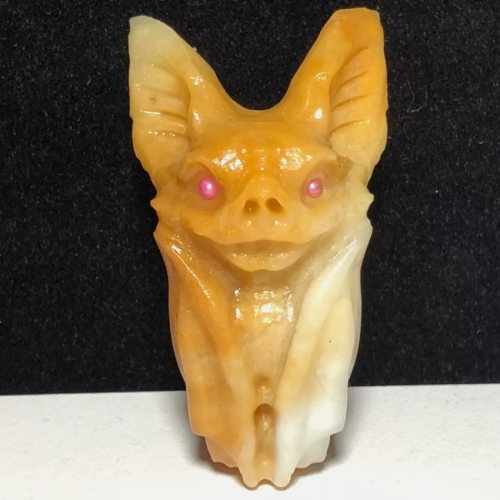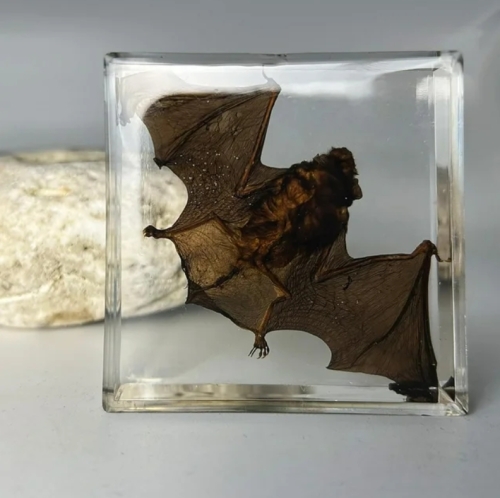Bat specimens are an important biological and ecological study object, providing scientists with a wealth of information about bat diversity, behavior, and ecosystem function. As the only species of mammals that can continuously fly, bats have attracted the attention of many researchers because of their unique lifestyle and ecological role.
Bats have a very unique body structure, usually with flexible wings and a keen hearing system. When people prepare bat specimens, they usually need to be carefully collected, preserved and treated to ensure that the specimen can be preserved for a long time and used for subsequent research. The process usually involves making detailed records of the bat's body morphological characteristics, including wingspan, weight, coat color and tooth shape. In addition, taxidermists also need to consider the ecological information of bats, such as habitat, feeding and breeding habits, and record this information to provide a more comprehensive reference data.
Bat specimens are not only used in basic research, but also as an important tool for ecological monitoring. By studying specimens from different areas, scientists can assess the health of bat populations in a given area and spot potential environmental changes or ecological threats. In addition, bats are important ecological engineers, playing a key role in pollination and seed dispersal. Understanding the ecological role of bats can help preserve and restore their habitats, thereby maintaining the ecological balance.
In the production of modern biological specimens, high-tech means such as DNA analysis and acoustic monitoring are increasingly used. These techniques allow researchers to conduct deeper genetic studies and behavioral analyses on the basis of bat specimens, revealing more complex ecological relationships.
















